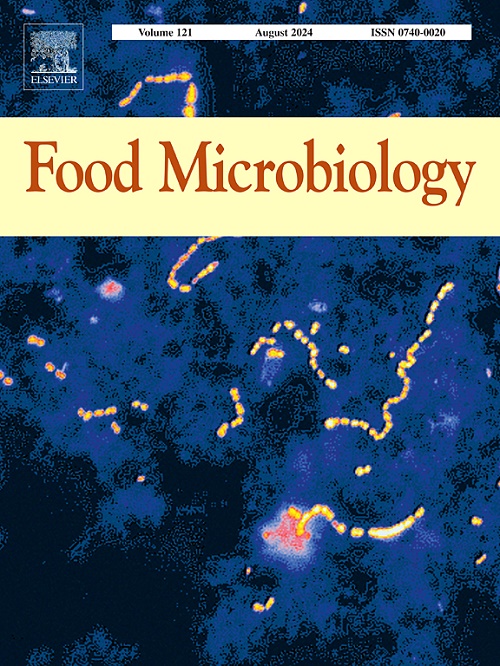Variability of growth parameter estimates - The role of rescaling and reparametrization
IF 4.5
1区 农林科学
Q1 BIOTECHNOLOGY & APPLIED MICROBIOLOGY
引用次数: 0
Abstract
The focus of this paper is to analyze the reliability of the error estimation when well-known primary models of predictive microbiology are used to fit growth parameters. We also demonstrate the application of rescaling and reparametrization to improve this reliability. We highlight that the technique can be useful for achieving linearity and homoscedasticity, reducing the complexity of the model, generating initial parameter estimates when fitting experimental data by non-linear regression, and obtaining realistic standard errors for the parameter estimates, which are crucial for decision-making in food safety.
We classify the sources of the total variability and correlation of the parameter estimates as "wet" and "dry". We point out that, rescaling and reparametrization do not change the model in a mechanistic sense but they can reduce the variances of (and/or the correlation between) the parameter estimates, thus mitigate the effects of such “dry” (i.e. statistical) relationships.
We analyze the reliability of the error estimation when the model of Baranyi and Roberts (BRM) and the Gompertz function (GF) are used to fit data. The comparison is based on the distribution of the standard error of the maximum specific growth rate estimates. The results show that the error structure of the BRM-fit is closer to that of the linear regression, making BRM more reliable for constructing confidence intervals by conventional means, using the t-distribution assumption for the parameter estimates.
生长参数估计的可变性-重新标度和重新参数化的作用
本文的重点是分析使用已知的预测微生物学初级模型拟合生长参数时误差估计的可靠性。我们还演示了重新缩放和重新参数化的应用,以提高这种可靠性。我们强调,该技术可用于实现线性和均方差,降低模型的复杂性,在非线性回归拟合实验数据时生成初始参数估计,并获得参数估计的实际标准误差,这对食品安全决策至关重要。我们将参数估计的总变率和相关性的来源分类为“湿”和“干”。我们指出,重新标度和重新参数化不会在机制意义上改变模型,但它们可以减少参数估计的方差(和/或相关性),从而减轻这种“干”(即统计)关系的影响。本文分析了用Baranyi和Roberts模型(BRM)和Gompertz函数(GF)拟合数据时误差估计的可靠性。这种比较是基于最大特定增长率估计的标准误差分布。结果表明,BRM拟合的误差结构更接近线性回归的误差结构,使得BRM在参数估计采用t分布假设的情况下,用常规方法构造置信区间更加可靠。
本文章由计算机程序翻译,如有差异,请以英文原文为准。
求助全文
约1分钟内获得全文
求助全文
来源期刊

Food microbiology
工程技术-生物工程与应用微生物
CiteScore
11.30
自引率
3.80%
发文量
179
审稿时长
44 days
期刊介绍:
Food Microbiology publishes original research articles, short communications, review papers, letters, news items and book reviews dealing with all aspects of the microbiology of foods. The editors aim to publish manuscripts of the highest quality which are both relevant and applicable to the broad field covered by the journal. Studies must be novel, have a clear connection to food microbiology, and be of general interest to the international community of food microbiologists. The editors make every effort to ensure rapid and fair reviews, resulting in timely publication of accepted manuscripts.
 求助内容:
求助内容: 应助结果提醒方式:
应助结果提醒方式:


